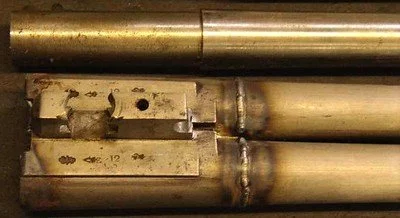Sleeving, a practical solution?
We see a lot of guns as you would imagine, and it never ceases to amaze me how giving a gun a what amounts to a new set of barrels generally halves the value.
I have never really understood this, and I doubt I ever will, ok, with some caveats, the job has to be done properly, the joint line should be welded and invisible, barrels properly struck up and balanced to the gun, true I have seen some dreadful sleeving jobs, which ok were functional but otherwise dreadful, barrels too thick, not struck up correctly, joint lines clearly visible, stamped “sleeved” on the side of the tubes.
Does it matter? Well yes of course it does, a bad or poorly carried out job matters, whether it’s barrels or stock, chequering or springs, poorly executed work will remove value.
Provided the sleeving is carried out correctly then in my view it doesn’t matter. If you pick up a gun that has been sleeved properly you should not be able to tell the difference, true the new barrels may be slightly heavier due to the increased wall thickness, but not enough to notice.
Sure we all like originality, but the fact is barrels do wear, either by use, neglect or both combined.
Generally we are talking about guns which are quite old and will have had their fair share of wear and tear, but what to do? You have a nice old English gun but the barrels are shot out or damaged beyond repair or so thin in the wall that they are not safe to use, new barrels are out of the question due to the cost, you have only one practical choice in reality, sleeving, this breathes new life into guns that are otherwise scrap, it ought to add value not subtract it.
It’s madness in my view, although I have fell foul just recently, a customer brought in a lovely Sidelock ejector 16g, best gun, circa 1910 Birmingham made from a very well known and respected maker, with sleeved barrels, done properly, which he wanted to sell, no apparent faults the gun is as it should be, I declined the sale, why? Because I knew it would be difficult to sell because of the barrels.
I didn’t know they were sleeved until I removed the barrels for measurement and saw “sleeved” on the flats, which is how they should be, indistinguishable from the original barrels, the gun handled perfectly, and would be a joy to shoot, yet I didn’t buy it.
There is one obvious advantage to this status quo, value for money, the enlightened among us can pick up some absolute bargains because of this dirty word, there are some very fine guns, not just London makers, with sleeved barrels for sale, but they often get rejected or overlooked, which is a real shame, especially in recent times when money is tight, it’s not a mistake I will make again.
Don’t get me wrong I would reject any guns that had badly sleeved barrels, unless I planned to re-sleeve them properly.
I buy for example, Beretta guns which are on the “sleeved” principle from new, and never even think whether they are “sleeved” or not.
We all want our guns to be as original as possible but the barrels are only a part of the gun, not the whole, and a wear part at that, done properly does it really matter?
Fact is for the majority of guns that require new barrels sleeving is the only practical choice.
Happy shooting
Mark.

